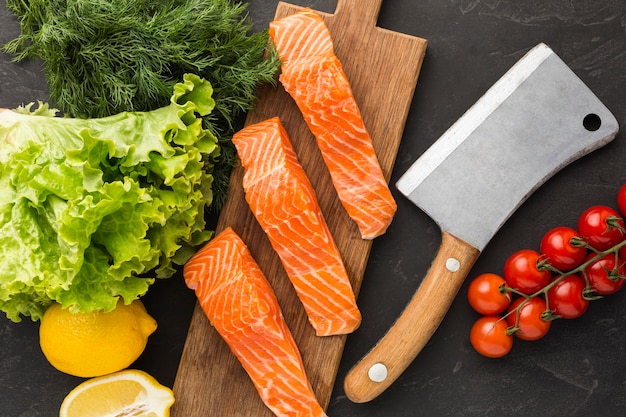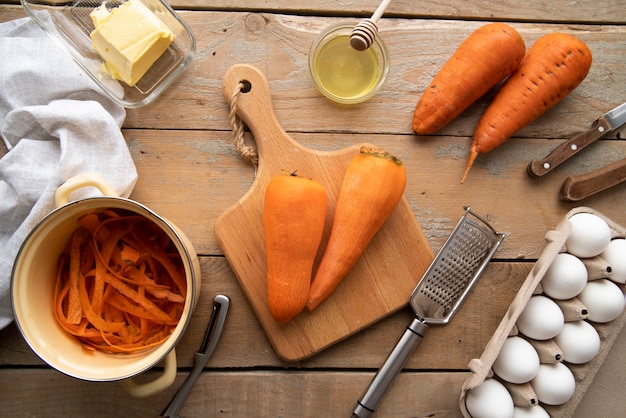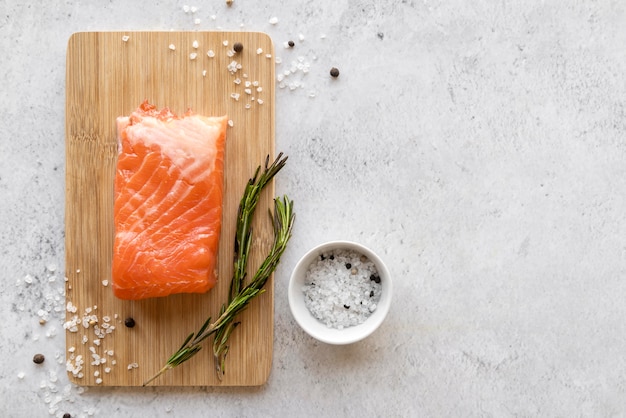Let’s be honest, frozen salmon is a lifesaver. It’s always there in the freezer, ready to be transformed into a delicious meal in a pinch. I used to think frozen salmon was a bit, well, blah. But over time, I’ve discovered its hidden culinary potential. It's surprisingly versatile, budget-friendly, and quick to cook.
This guide is all about helping you unlock the secrets of frozen salmon. We'll cover everything from choosing the right fish to cooking techniques, flavor pairings, and even some of my favourite recipes. Get ready to elevate your frozen salmon game!
(Part 1) Choosing the Right Frozen Salmon

Choosing the right frozen salmon is like picking a good friend – you want someone reliable and flavorful! Here's what you should look for when browsing the freezer aisle:
1. The Type of Salmon
atlantic salmon: This is the most common type and usually farmed, making it a good value choice. Atlantic salmon has a delicate, mild flavor that’s easy to work with.
sockeye salmon: This wild-caught salmon is known for its rich, deep orange flesh and buttery flavour. It's a bit pricier, but a real treat when you want a special dinner.
pink salmon: This salmon has a lighter colour and a milder flavour compared to sockeye. It’s another great value option, perfect for families or when you need a bigger batch.
2. The Packaging
Individual Portions: Great for single meals or if you're cooking for different appetites. They're usually vacuum-sealed for freshness and flavor.
Whole Fillets: Perfect for a crowd or if you're making a big batch of salmon for meal prepping. You can cut them into portions or cook them whole.
Skin-on or Skinless: Some frozen salmon comes with the skin on, while others are skinless. The skin adds a bit of flavour and texture, but you can remove it if you prefer.
3. The Appearance
Color: Look for salmon with a vibrant color, either a deep orange or a light pink. Avoid any salmon that looks dull or discolored. This could indicate it's not as fresh as it should be.
Texture: The salmon should feel firm and not mushy or slimy. If it's too soft or squishy, it might be freezer-burnt.
Smell: Fresh salmon has a mild, ocean-like smell. Avoid any salmon that smells fishy or off.
4. Freezing and Storage
Frozen Salmon's Shelf Life: Frozen salmon can last for up to 3-4 months in the freezer if stored properly.
Thawing: The best way to thaw frozen salmon is in the refrigerator overnight. Thawing slowly helps to preserve the quality and texture of the fish. You can also thaw it in cold water, but make sure to change the water every 30 minutes. Don’t thaw salmon at room temperature - it can lead to bacterial growth.
(Part 2) cooking frozen salmon: Techniques and Tips

Now that you've chosen your frozen salmon, it's time to cook it up! Here are some easy and reliable methods that will help you create a delicious meal:
1. The Baking Method
Baking is my go-to method for simple and flavorful salmon. It's also a great option for beginners because it's hard to mess up!
Step 1: Preheat your oven to 180°C (350°F).
Step 2: Line a baking sheet with parchment paper. This will prevent the salmon from sticking and make for easier cleanup.
Step 3: Place your thawed salmon fillets on the baking sheet.
Step 4: Season with salt, pepper, and any other herbs or spices you like. A squeeze of lemon juice and a drizzle of olive oil are always great additions.
Step 5: Bake for 12-15 minutes, or until the salmon is cooked through and flakes easily with a fork. You can use a meat thermometer to ensure it's cooked to an internal temperature of 145°F (63°C).
2. The Pan-Frying Method
Pan-frying is perfect for a crispy and flavorful salmon. It’s a bit more hands-on but yields delicious results.
Step 1: Heat a pan over medium heat and add a tablespoon of olive oil.
Step 2: Place your thawed salmon fillets in the pan, making sure they don’t overcrowd the pan.
Step 3: Cook for 3-4 minutes per side, or until the salmon is cooked through and golden brown.
Step 4: Season with salt, pepper, and any other herbs or spices you like.
3. The Grilling Method
Grilling is a great way to add a beautiful smoky flavour to your salmon. It’s perfect for summer days when you want to enjoy the outdoors.
Step 1: Preheat your grill to medium heat.
Step 2: Place your thawed salmon fillets on the grill, making sure they are evenly spaced.
Step 3: Grill for 3-4 minutes per side, or until the salmon is cooked through and slightly charred.
Step 4: Season with salt, pepper, and any other herbs or spices you like.
4. Tips for Perfect Frozen Salmon
Don't Overcook: Salmon cooks quickly, so it's important not to overcook it. overcooked salmon will be dry and tough.
Check for Doneness: The best way to tell if salmon is cooked through is to check the internal temperature. It should reach an internal temperature of 145°F (63°C).
Flake Test: Another way to check if salmon is cooked is to use the flake test. Gently insert a fork into the thickest part of the salmon. If it flakes easily, it's cooked through.
(Part 3) Flavor Pairings: Elevate Your Frozen Salmon Game

Frozen salmon is like a blank canvas. It pairs beautifully with a wide range of flavours, allowing you to experiment and create unique culinary experiences. Here are some flavour combinations to inspire you:
1. Mediterranean Inspiration:
Lemon and Herbs: A classic combination that highlights the fresh, delicate flavour of salmon. Try a squeeze of lemon juice, fresh dill, parsley, and a touch of oregano.
Garlic and Olive Oil: A simple yet effective way to enhance the flavour of salmon. Use minced garlic or garlic paste for a stronger punch.
Sun-dried Tomatoes and Capers: These ingredients add a salty, tangy, and slightly sweet flavour to salmon. They are particularly delicious when combined with a lemon-herb dressing.
2. Asian Fusion:
Ginger and Soy Sauce: A classic combination that adds a savory and slightly spicy flavour to salmon. You can create a delicious glaze with ginger, soy sauce, and honey.
Sesame Oil and Mirin: These ingredients create a sweet and nutty flavor profile that is perfect for salmon. Add a touch of sesame seeds for extra texture and flavour.
Sriracha and Lime Juice: For a bit of a kick, add a touch of sriracha and lime juice. These ingredients work well in a marinade or as a finishing sauce.
3. Southwestern Spice:
Chili Powder and Cumin: These spices add a smoky and earthy flavour to salmon. Combine them with paprika and cayenne pepper for a more complex spice blend.
Lime Juice and Cilantro: For a bright and refreshing touch, add a squeeze of lime juice and chopped cilantro. These ingredients also pair well with avocado and mango.
Avocado and Mango: Add a touch of creaminess and sweetness with some avocado and mango. You can make a delicious salsa with these ingredients, or simply top your cooked salmon with slices of avocado and mango.
(Part 4) frozen salmon recipes: A culinary adventure
Here are some of my favourite recipes that showcase the versatility of frozen salmon:
1. One-Pan Roasted salmon with lemon and Herbs
This recipe is incredibly easy to make and results in a beautiful, flavourful meal. It's perfect for a weeknight dinner when you don't have a lot of time.
Ingredients:
1 lb frozen salmon fillets, thawed
1 tablespoon olive oil
1 lemon, sliced
1/4 cup chopped fresh dill
1/4 cup chopped fresh parsley
Salt and pepper to taste
Instructions:
Preheat oven to 400°F (200°C).
Place salmon fillets on a baking sheet lined with parchment paper.
Drizzle with olive oil and season with salt and pepper.
Top each fillet with lemon slices, dill, and parsley.
Bake for 15-20 minutes, or until the salmon is cooked through.
2. Pan-Seared salmon with Ginger-Soy Glaze
This recipe is a delicious way to add a touch of Asian flavour to your salmon. The ginger-soy glaze is both sweet and savory, and it's easy to make.
Ingredients:
1 lb frozen salmon fillets, thawed
1 tablespoon olive oil
1 tablespoon grated fresh ginger
2 tablespoons soy sauce
1 tablespoon honey
1 tablespoon rice vinegar
Instructions:
In a small bowl, whisk together the ginger, soy sauce, honey, and rice vinegar.
Heat a pan over medium heat and add the olive oil.
Place salmon fillets in the pan and cook for 3-4 minutes per side, or until cooked through.
Pour the ginger-soy glaze over the salmon and cook for 1-2 minutes more, or until the glaze is thickened.
3. grilled salmon with Mango Salsa
This recipe is perfect for summer evenings. The smoky flavour of the grilled salmon combines beautifully with the fresh, fruity mango salsa.
Ingredients:
1 lb frozen salmon fillets, thawed
1 ripe mango, diced
1/2 red onion, diced
1/4 cup chopped fresh cilantro
2 tablespoons lime juice
1 tablespoon olive oil
Salt and pepper to taste
Instructions:
In a bowl, combine the mango, red onion, cilantro, lime juice, olive oil, salt, and pepper.
Preheat grill to medium heat.
Place salmon fillets on the grill and cook for 3-4 minutes per side, or until cooked through.
Serve salmon topped with mango salsa.
(Part 5) Frozen Salmon: A Budget-Friendly Option
Frozen salmon is a great choice for those looking for a budget-friendly meal. Here are some reasons why:
Cost-Effective: Frozen salmon is often much cheaper than fresh salmon, especially if you buy it in bulk.
Long Shelf Life: Frozen salmon can last for months in the freezer, which means you can stock up and save on multiple grocery trips.
No Waste: With frozen salmon, you can easily use only the amount you need for a meal, reducing food waste.
(Part 6) Frozen Salmon: Nutritional Benefits
Frozen salmon is not only delicious, but it's also packed with nutrients that are beneficial for your health.
Protein Powerhouse: Salmon is a great source of protein, which is essential for building and repairing tissues.
Omega-3 Fatty Acids: Salmon is rich in omega-3 fatty acids, which are known to support heart health, brain function, and reduce inflammation.
Vitamin D: Salmon is also a good source of vitamin D, which is essential for bone health and immune function.
Selenium: This mineral is an antioxidant that helps to protect cells from damage.
(Part 7) Frozen Salmon: Recipes for All Occasions
Frozen salmon is so versatile, you can use it for everything from quick weeknight meals to fancy dinner parties.
Quick Weeknight Meals:
Salmon with Roasted Vegetables: This is a simple and satisfying meal that's perfect for a busy weeknight. Simply toss your favorite vegetables (such as broccoli, carrots, and potatoes) with olive oil and seasonings, then roast them in the oven along with your salmon.
Salmon Patties: These are a great way to use up leftover salmon. Simply mix the salmon with some breadcrumbs, egg, and seasonings, then form into patties and pan-fry or bake them.
Salmon Salad: This is a refreshing and healthy meal that's perfect for a light lunch or dinner. Combine flaked salmon with your favorite salad ingredients, such as lettuce, tomatoes, cucumbers, and a vinaigrette dressing.
Weekend Delights:
salmon en papillote: This elegant dish is perfect for a romantic dinner. Simply wrap salmon fillets with vegetables and herbs in parchment paper and bake until cooked through.
Salmon Tacos: These are a fun and flavorful way to enjoy salmon. Simply flake cooked salmon and add it to tortillas with your favorite toppings, such as salsa, sour cream, and avocado.
Salmon Pizza: This is a unique and delicious way to use up leftover salmon. Simply top a pizza crust with cooked salmon, your favorite toppings, and cheese.
Party Time:
smoked salmon Canapés: These are a classic party appetizer that's always a hit. Simply top crackers or bread with smoked salmon, cream cheese, and a squeeze of lemon juice.
Salmon Crostini: These are another elegant appetizer that's perfect for a cocktail party. Simply toast bread slices and top them with cooked salmon, cream cheese, and your favorite herbs.
Salmon Dip: This is a delicious and easy dip that's perfect for parties. Simply combine cooked salmon with cream cheese, sour cream, and your favorite seasonings.
(Part 8) FAQs: Your Frozen Salmon Questions Answered
Let's address some of the questions you might have about frozen salmon:
1. Is frozen salmon as good as fresh salmon?
It's a matter of opinion, but with proper thawing and cooking techniques, frozen salmon can be just as delicious as fresh. Look for high-quality frozen salmon, and you’ll be rewarded with a flavorful meal.
2. Can I refreeze frozen salmon?
Generally, it's not recommended to refreeze frozen salmon. It can affect the texture and flavor. If you absolutely must refreeze it, make sure to cook it thoroughly before refreezing.
3. How long can I keep frozen salmon in the freezer?
Frozen salmon can last for up to 3-4 months in the freezer if stored properly.
4. What's the best way to thaw frozen salmon?
The best way to thaw frozen salmon is to transfer it from the freezer to the refrigerator overnight. Thawing slowly helps to preserve the quality and texture of the fish. You can also thaw it in cold water, but make sure to change the water every 30 minutes. Never thaw frozen salmon at room temperature.
5. Can I use frozen salmon for sushi?
While it's not ideal to use frozen salmon for sushi, as the freezing process can affect its texture, it is possible if you use high-quality frozen salmon and thaw it properly. However, for the best sushi experience, it's always best to use fresh salmon.
(Part 9) Conclusion: Embrace the Frozen Salmon Revolution
Frozen salmon is a true culinary hero. It's affordable, convenient, healthy, and surprisingly versatile. Give it a go and discover the world of delicious, budget-friendly salmon dinners. You might just find yourself embracing the frozen salmon revolution!
Everyone is watching

How to Cook Frozen Lobster Tails Perfectly: A Step-by-Step Guide
RecipesLobster. Just the word conjures up images of lavish meals, special occasions, and a taste of luxury. But let's...

Pigs in a Blanket Cooking Time: How Long to Bake for Perfect Results
RecipesAh, pigs in a blanket. Just the name conjures up images of those delightful little parcels of crispy pastry en...

Pork Fillet Cooking Time: How Long to Cook It Perfectly
RecipesPork fillet, or tenderloin as it's sometimes called, is a real favourite in our house. It's so versatile, and...

The Ultimate Guide to Cooking Delicious Frankfurters
RecipesLet's face it, we all love a good frankfurter. It's a classic, simple, and always satisfying. But let's be rea...

Wolf Meat Recipes: A Guide to Cooking Wild Game
RecipesLet's be honest, you don't see wolf meat at your local butcher shop every day. It's a bit of a wild card, but ...
